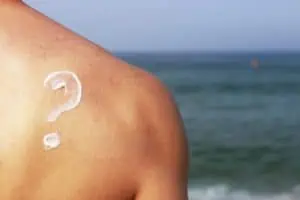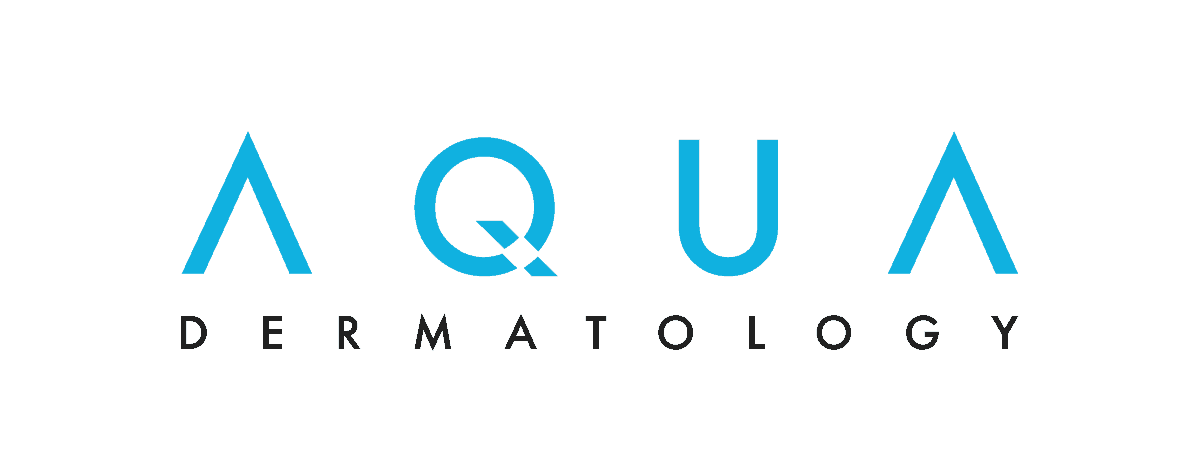
Medical Review By: Evelina Ingersoll, APRN
Most of us know enough to pack sunscreen before hitting the beach, spending the day at the lake or pool or working outdoors. But which sunscreen should you choose? How should you apply it and how much should you apply? And does it expire?
Read on for answers to frequently asked questions that will help you get the maximum protection from sunscreen.
Does everyone need to use sunscreen?
Yes. Overexposure to ultraviolet (UV) rays from the sun can cause sunburn, dark spots, leathery skin and skin cancer. The risk of developing skin cancer is higher if you have fair skin and burn easily, but anyone can get it, regardless of their skin tone or age. Even young people get melanoma, one of the deadliest types of skin cancer.
Many men are resistant to wearing sunscreen, but they need it too.
How does sunscreen work?
There are two basic types of sunscreens: chemical and mineral.
Chemical sunscreens sink into the skin and absorb the sun’s rays. Those rays are converted into heat, which is released from the body. Mineral sunscreens, also known as physical sunscreens, contain zinc oxide and/or titanium dioxide. They sit on top of the skin and work by deflecting the sun’s rays.
What is SPF and what SPF do I need?
SPF stands for sun protection factor. It’s a measure of how well the product protects against UVB rays (the burning rays). The higher the SPF, the more protection the product offers.
According to the FDA, it’s a common misconception that SPF relates to how much time it takes to get burned (for example, that SPF 15 means you can stay in the sun 15 times longer than you could without sunscreen before you get burned). It’s actually a measure of how much UV radiation it takes to produce a sunburn on protected skin.
The American Academy of Dermatology suggests using sunscreen with an SPF of at least 30, which blocks 97% of UVB rays. You can buy sunscreen with higher SPF, but no sunscreen blocks 100% of the sun’s rays. Also, a higher SPF doesn’t mean you can use less or reapply less often.
When do I need to use sunscreen?
Use it every day that you’ll be outside, however briefly. Sun damage can start after as little as 10 minutes, and the effects are cumulative. Even walking from the car to the office or store without sunscreen can add to the damage.
You’ll also want to wear sunscreen when you’re sitting indoors next to a window, when you’re in the car and when you’re on a plane or train if you have a window seat. Window glass filters some, but not all, UVA rays, which cause premature skin aging as well as skin cancer. (UVB rays, the “burning” rays, don’t pass through windows, which is why you can’t get sunburned through a window.)
RELATED: 4 Surprising Times You Need to Wear Sunscreen
Don’t save the sunscreen for warm, sunny days. Most of the sun’s UV rays pass through clouds. Snow, sand and water all reflect those rays.
How much sunscreen should I use on my body?
Squeeze strips of sunscreen along the lengths of your index finger and middle finger. This should be about the right amount to cover your face, neck and ears.
Don’t rely on the SPF in your moisturizer or makeup for sunscreen protection if you’ll be outside for any significant length of time. It’s unlikely that you can use enough or reapply often enough to get the benefit you’d get from a sunscreen with the same SPF.
Remember that lips get sunburned, too. Use a lip balm with an SPF of 30 or higher.
When should I apply sunscreen?
Chemical sunscreens don’t work until they have been absorbed into the skin, which can take 10 minutes or more. That’s why experts recommend applying sunscreen at least 15 minutes before going outside. Mineral sunscreen stays on top of the skin and starts working right away.
Apply sunscreen after applying your moisturizer, not before.
How often should I reapply sunscreen?
If you’re spending the day outdoors, reapply every two hours or after swimming, sweating or toweling off. Even water-resistant sunscreens can wear off or rub off; there are no totally waterproof sunscreens. Chemical sunscreens are typically more water-resistant than mineral sunscreens.
The FDA requires that sunscreen labels indicate when to reapply, after either 40 or 80 minutes when swimming or sweating.
How do I choose the best sunscreen?
The American Academy of Dermatology recommends that everyone choose sunscreen with:
- Broad-spectrum protection
- SPF 30 or higher
- Water resistance
Sunscreens labeled “broad spectrum” protect the skin from both UVA and UVB rays. Both rays can cause skin cancer.
Beyond these three factors, choosing the best sunscreen is a matter of personal preference. When it comes down to it, the best sunscreen is the one you’re most likely to use.
Lotions, creams and gels all work well. Creams are best for people with dry skin. Because they are thicker, they may be better for the face than lotions. You can also choose sunscreen made specifically for children, for sensitive skin or for faces. You can even use different types of sunscreen for different parts of the body.
Men may prefer a gel sunscreen for hairy areas such as the scalp or chest.
Does sunscreen spray work?
Sprays work only if you’re able to get full coverage, which can be tricky. Follow these tips:
• Hold the can close to your skin and spray generously.
• Rub the spray in, even if the label says you don’t need to. You can’t always tell where you’ve sprayed and where you haven’t.
• When using spray sunscreen for your face, spray it into your hands first, then apply it to your face. Spray sunscreen can irritate the eyes and the lungs if inhaled.
• Be careful when using spray sunscreen on a windy day. Even a slight breeze can redirect the spray, and you’ll end up unprotected. There’s also a greater chance of inhaling it or getting it in your eyes. (People nearby may also inhale it.)
• Don’t spray while smoking or near a grill or other source of fire. Aerosol sprays can be flammable.
Does sunscreen expire?
Yes, but it has a long shelf life. The FDA requires sunscreens to post an expiration date unless testing shows that the product will remain stable for at least three years.
Go by the expiration date. If there’s isn’t one, discard the product after three years. If you notice color or consistency changes, it’s best to replace it.
Does sunscreen interfere with vitamin D absorption?
Our bodies produce vitamin D from sunlight that strikes our skin, so daily use of sunscreen may result in decreased vitamin D production. More studies are needed, but most research to date shows no association between sunscreen use and vitamin D deficiency in healthy people.
If you’re concerned about getting enough vitamin D, have a conversation with your doctor. You can get more vitamin D through your diet or dietary supplements.
Does it matter where I store my sunscreen?
Yes. Keep it out of direct sun. If you’re on the beach or by the pool, wrap it in a towel or keep it in the shade. On the hottest days, keep it in your cooler if you have one.
Article written by: Ann Pietrangelo, an author and freelance writer specializing in health and wellness.





